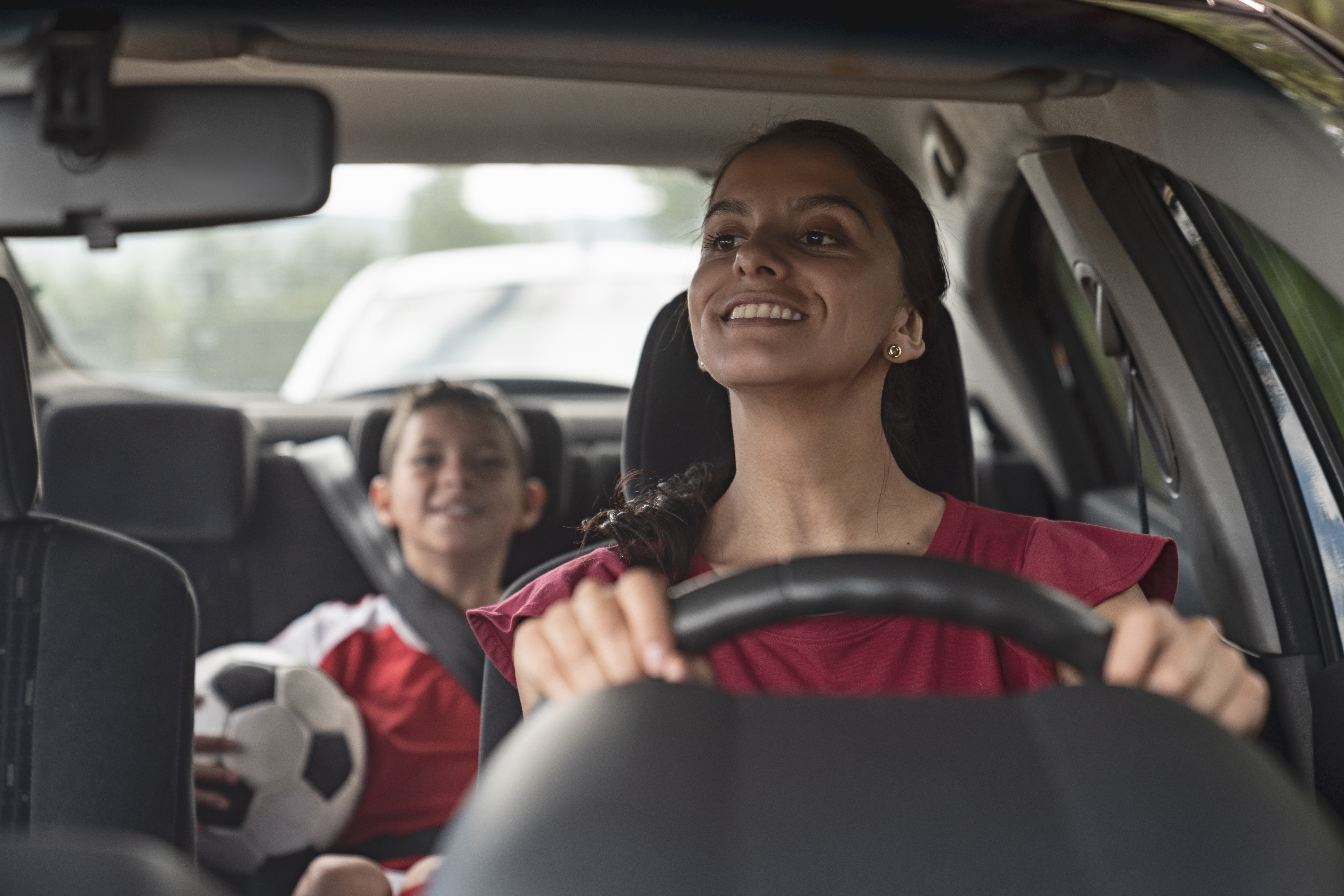What is Distracted Driving & How to Avoid it
Updated June 28, 2024 | Published April 4, 2023
-
Categories:
- Auto Insurance
- For Drivers
- Safe Driving

Distracted driving is the performing of another activity that takes attention away from driving, increasing the chance of a motor vehicle accident. It is an unfortunate topic that needs to be brought to light. Nine lives are taken every day in crashes that are reported to involve a distracted driver. We live in a world where distractions are at our fingertips, so let’s look at why distracted driving needs to be avoided at all costs, as well as some tips to prevent distracted driving.
Types of Driving Distractions
Distractions are classified as anything that sends your attention away from properly operating your motor vehicle. Some examples of distractions are: sending a text message, talking on a cell phone, using a navigation system, and eating while driving. There are three main types of distractions:
- Visual: taking your eyes off the road
- Manual: taking your hands off the wheel
- Cognitive: taking your mind off driving
Risk Levels for Distracted Driving
Young adult and teen drivers are more likely to fall into the bad habit of distracted driving.
- Among fatal crashes involving distracted drivers in the US in 2019:
- A higher percentage of drivers ages 15-20 were distracted than drivers age 21 and older.
- Texting or emailing while driving is more common among older students than younger students.
- Students who texted or emailed while driving were also more likely to report other transportation risk behaviors, such as:
- They were more likely to not always wear a seat belt.
- They were more likely to drive after drinking alcohol.
Distracted Driving is Preventable; Here’s What You Can Do
As a driver:
- Don’t multitask while driving. Whether it’s adjusting your mirrors, eating, making a phone call, or reading a text or email… it can wait, or be done before you drive.
- There are apps that you can use to avoid using your cell phone while driving. Many smartphones also have a “Do Not Disturb While Driving” feature.
- Keep children and pets secure. Make sure that children are in proper car seats and pets stay secured in the back of your vehicle. Having pets roaming throughout your car can significantly increase distractions.
- Plan your route before you go. Programming your navigation system while you drive takes your eyes off of driving. It’s best to ask a passenger to enter your destination or do it before you leave.
- Avoid reaching. Resist the urge to reach for items if they fall while you’re driving.
As a passenger:
- Speak up if you’re in a car with a distracted driver. Ask the driver to focus on driving, or offer to help them with whatever they need.
- Don’t be a distraction. Avoid calling or texting family members and friends when you know they might be driving. To avoid distracting the driver if you’re a passenger, it’s courteous to not call others, unless it’s an emergency.
As a parent:
- Talk to your teen or young adult about the rules and responsibilities involved in driving. Don’t be afraid to share stories and statistics related to teen/young adult drivers and distracted driving.
- It’s important to remind them that driving is a skill that requires your full attention.
- Emphasize that texts and phone calls can wait until you arrive at your destination. This is often a big culprit of distracted driving for teenagers.
- Familiarize yourself with your state’s graduate driver licensing system. Enforce the guidelines with your teen.
- Know your state’s laws on distracted driving. Many states have novice driver provisions in their distracted driving laws. Talk with your teen about the consequences of distracted driving and make yourself and your teen aware of your state’s penalties for talking or texting while driving.
- Set consequences for distracted driving. Your family’s rules of the road can be stricter than your state’s law. You can also use these simple and effective ways to get involved with your teen’s driving: Parents Are the Key.
- Set an example by keeping your eyes on the road and your hands on the wheel at all times while driving.
While many states are enacting laws to prevent distracted driving, it is important that the role models surrounding young people, such as parents, teachers, and mentors, are also guiding teens and young adults towards making good driving decisions. In the event of an accident, you need insurance that will have your back when you need it most. WebFirst Insurance, LLC, can help you find the right auto insurance provider to help you get back on your feet quickly in the event of an accident.
